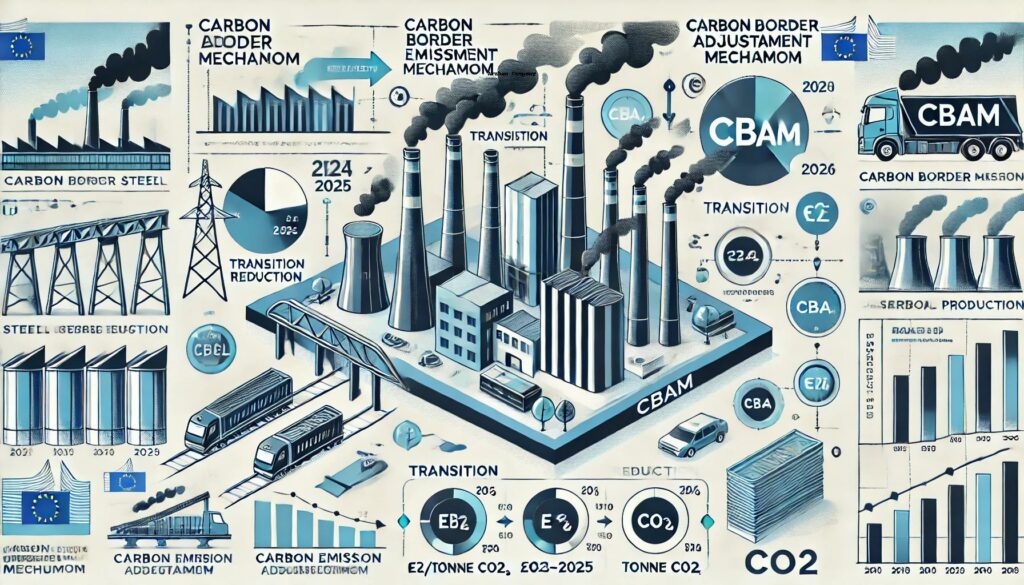CBAM: Understanding the EU’s Carbon Border Adjustment Mechanism for Steel and Other Goods

CBAM: Understanding the EU’s Carbon Border Adjustment Mechanism for Steel and Other Goods
The Carbon Border Adjustment Mechanism (CBAM) is a key initiative by the European Union to promote cleaner industrial production globally. It ensures that a fair price is assigned to carbon emissions embedded in imported carbon-intensive goods, like steel billets and grinding balls, aligning with the EU’s climate goals.
At Arzhan Company, we help our clients navigate the complexities of exporting steel products to the EU, ensuring compliance with CBAM regulations while maintaining competitive pricing.
What is CBAM?
CBAM aims to create a level playing field by making the carbon price of imports equivalent to the cost of carbon emissions for EU-based producers. This prevents carbon leakage—where production shifts to countries with lax environmental policies—and supports global decarbonization efforts.
CBAM is compatible with WTO rules and is being phased in gradually:
- Transitional Phase (2023–2025): Importers report greenhouse gas (GHG) emissions embedded in their imports without purchasing CBAM certificates.
- Definitive Phase (from 2026): Importers must buy CBAM certificates to cover emissions embedded in imported goods.
How CBAM Impacts Steel Products
From October 2023, CBAM applies to carbon-intensive imports, including iron, steel, aluminium, and fertilizers. For steel products like billets and grinding balls, importers are required to report embedded emissions and prepare for the definitive phase.
Key points:
- From 2026: EU importers must purchase CBAM certificates based on emissions data.
- Carbon Price Adjustment: The cost is linked to the EU’s Emissions Trading System (ETS) and calculated per tonne of CO2 emitted.
- Reporting Flexibility: Until 2024, non-EU producers can use different reporting methods. From 2025, only the EU method will be accepted.
For non-EU producers, the CBAM Transitional Registry provides tools for emissions reporting and compliance. Importers must register with their National Competent Authorities (NCA) to access the system.
Stay Updated on CBAM Compliance
To help non-EU steel producers and traders understand the CBAM process, you can download the following file for a comprehensive guide covering:
For additional resources and updates, refer to the EU’s official CBAM page.
